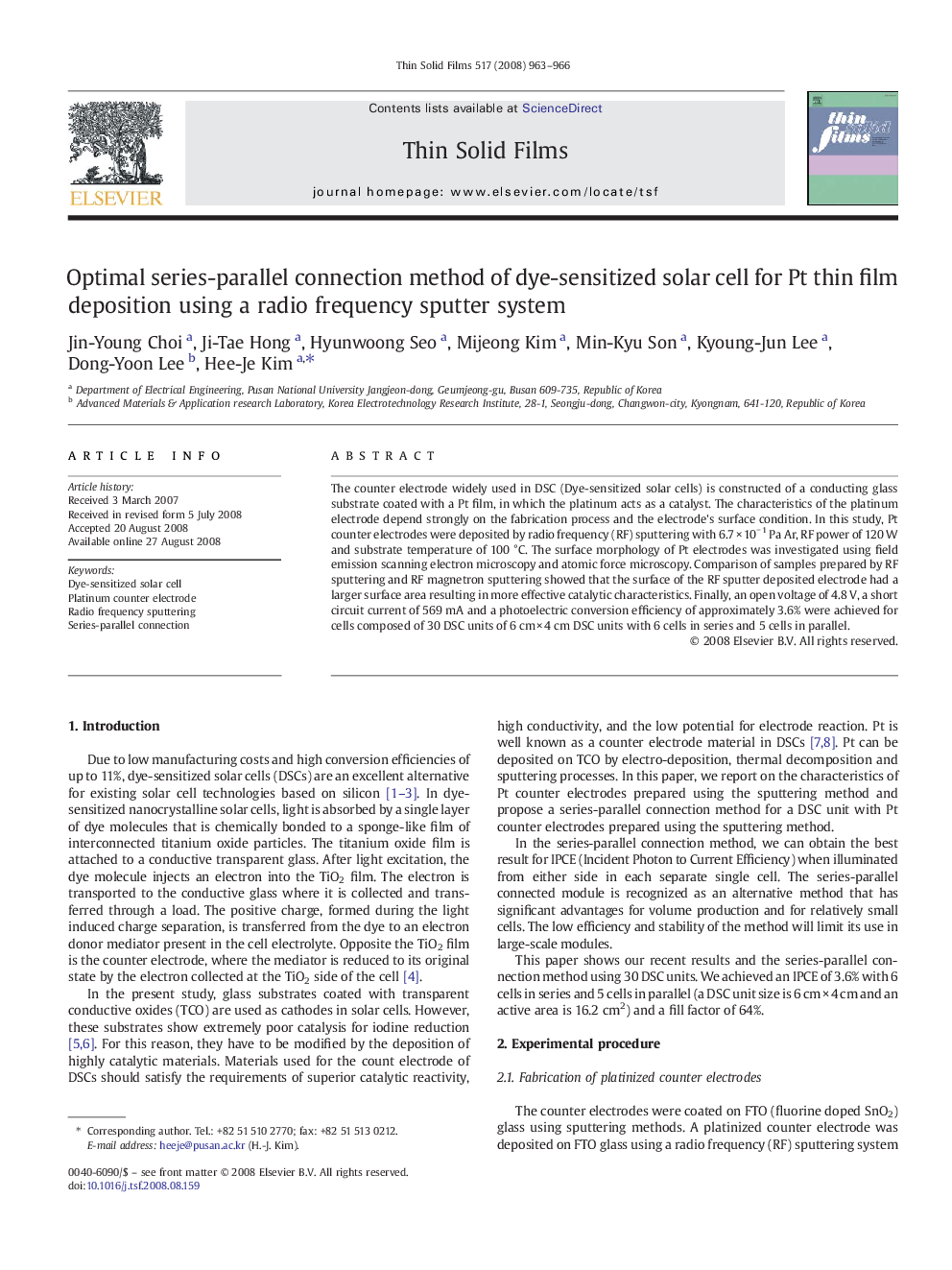| Article ID | Journal | Published Year | Pages | File Type |
|---|---|---|---|---|
| 1670195 | Thin Solid Films | 2008 | 4 Pages |
The counter electrode widely used in DSC (Dye-sensitized solar cells) is constructed of a conducting glass substrate coated with a Pt film, in which the platinum acts as a catalyst. The characteristics of the platinum electrode depend strongly on the fabrication process and the electrode's surface condition. In this study, Pt counter electrodes were deposited by radio frequency (RF) sputtering with 6.7 × 10− 1 Pa Ar, RF power of 120 W and substrate temperature of 100 °C. The surface morphology of Pt electrodes was investigated using field emission scanning electron microscopy and atomic force microscopy. Comparison of samples prepared by RF sputtering and RF magnetron sputtering showed that the surface of the RF sputter deposited electrode had a larger surface area resulting in more effective catalytic characteristics. Finally, an open voltage of 4.8 V, a short circuit current of 569 mA and a photoelectric conversion efficiency of approximately 3.6% were achieved for cells composed of 30 DSC units of 6 cm × 4 cm DSC units with 6 cells in series and 5 cells in parallel.
